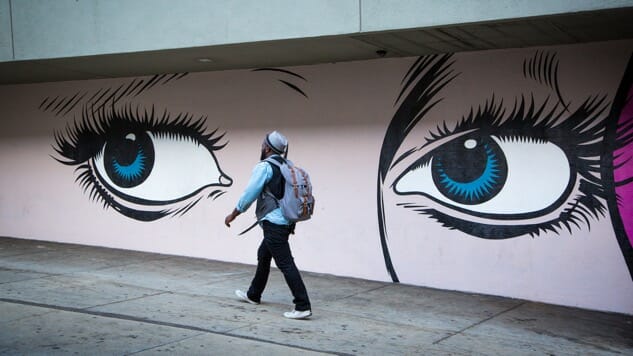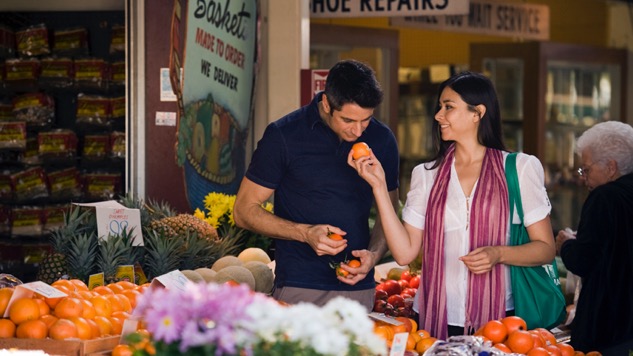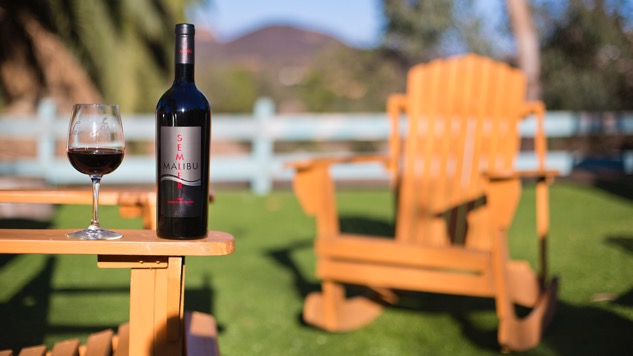9 Non-Tourist Activities for L.A. Tourists
Photo: Los Angeles Tourism & Convention Board Travel Lists
Side with the West Coast in an LA vs. NYC debate, and a New Yorker might go all Trump on ya, but side with the City, and most Angelenos will simply say, “Cool, bro.” Locals rarely get defensive about the City of Angels because outside opinions carry little weight, but it also means less effort is made to cater to tourists. Among the nicer slams, people say Los Angeles is a great place to live but a terrible place to visit, but within that classic line lies the trick to an enjoyable visit: Ask a local. Sure, the weather, wine and weed all make it a great place to live, but a local can tell you how to take advantage of those perks. For the best non-tourist activities, yes, you will have to drive, but it is usually worth it. Here are nine recommendations that go beyond the museums, parks and tar pits courtesy of a Los Angeles native.
![]()
1. Hike to Parker Mesa for Epic Ocean Views
Rookies hike Runyon Canyon; the pros head to the Parker Mesa Overlook. The hike—located in Topanga State Park on the coastal side of the Santa Monica Mountains—ascends nearly 1,300 feet in elevation. The payoff? The trail takes you to an overlook with epic views of the Pacific coastline, Catalina Island, surrounding mountain ranges and even downtown. The moderately difficult trek is long (seven miles round trip), but the slope is rarely steep, and the lower part of the trail provides decent shade. From the Pacific Coast Highway, head east on Sunset Boulevard and take your second left on Los Liones Drive. The well-marked trailhead is about half a mile down where the street takes a sharp left turn. (Pro Tip: When in doubt, always go right when descending the mountain trail.)
2. Pop Art in Santa Monica, Culver City and DTLA

Photo: Los Angeles Tourism & Convention Board
Tour books generally send art lovers to the big guns like The Broad and The Getty, but pop and street art enthusiasts should head to the gallery scenes in downtown (DTLA), Culver City (near La Cienega and Washington Boulevards) and at Bergamot Station (near Michigan Avenue and 26th Street) in Santa Monica. Dozens of galleries populate Bergamot Station, but Corpo Gallery by Juxtapoz co-founder Greg Escalante and run by art vet Gary Pressman—is the top pick with art from Anthony Ausgang, Jota Leal and Geoffrey Gersten. The DTLA art scene has vibrant galleries from Little Tokyo to the Art District, but the 12,000-square-foot Corey Helford Gallery just east of Los Angeles River lands big names like Ron English, Shag and Herakut. In Culver City, check out Fabien Castanier Gallery for artists like Stuart Semple and Gastón Ugalde and Zevitas Marcus for South Park alumnus Eric Yahnker. Check the websites for opening receptions (galleries often time them for the same night) that typically include wine, snacks and a lively atmosphere where the singles like to mingle.
3. Wine Tastings at Wally’s
Wally’s Wine might have a dorky name, but it is arguably the best wine shop in the country. Opened by Steve Wallace in 1968, the shop changed hands in 2013 to an investment group headlined by the founders of Guess, and its chief wine taster is famously the sommelier to the stars. Customers have included Tom Cruise, Robert De Niro, Jack Nicholson and Bill Clinton, among others. Yes, name dropping is an LA move, but it helps explain why Wally’s has serious clout in the wine industry, and their influence translates into amazing weekly wine tastings that typically cost only $10. Every Saturday, the original Westwood location holds a two-hour tasting from 2pm to 4pm that includes curated cheese pairings from the on-site Cheese Box. Opened in 2014, a second Wally’s location in Beverly Hills doubles as a restaurant-vinoteca, and it hosts nighttime tastings about once a month. Wally’s also hosts annual events—such as the upcoming Grande Marque Champagne Event on June 5—that take place in larger venues that have included the Museum of Flying. Obviously you’re going to need an Uber.
4. Go Green at a Farmer’s Market

Photo: Courtesy of Original Farmers Market
What Los Angeles lacks in elite restaurants it makes up for in food. That is more or less how the saying goes, and while most Angelenos would question the first half of that characterization, the second half is spot-on. California’s Central Valley produces more than half of the country’s fruits, vegetables and nuts. For this reason, even the divest restaurants can arguably claim farm-to-plastic-fork produce. This also means Los Angeles claims some of the best farmer’s markets. Santa Monica has the better-known markets, but head to the Pacific Palisades (Sundays 8am to 1pm) for gourmet goods like fresh pasta, homemade hummus, local seafood and maybe even black truffles.
5. Walk Lake Hollywood
Hollywood has a lake, really? See, this is why you need to ask a local. Not only does Hollywood have a lake surrounded by a paved 3.3-mile track, the Hollywood Sign is on one side, and DTLA views are on the other. The lake is really a reservoir created by the Mulholland Dam, which went up nearly a century ago. Many runners lap the lake, but it is also a beautiful place to take a stroll and snap Instagrammable pictures of the sign and the DTLA skyline.
6. Visit an Oceanfront Vineyard

Photo: Los Angeles Tourism & Convention Board
Malibu’s image is beaches, celeb homes and Charlie Harper booze hounding, but the Boo (as annoying people call it) also boasts several wine vineyards. Hey, leave it to the rich and famous to want wine delivered straight from the barrell! Several of these vineyards—e.g., Rosenthal, Malibu Wines, Malibu Rocky Oaks Estate, Cornell Winery, Church Estate Vineyard and Cielo Malibu Estate Vineyard—have tasting rooms, tours and/or restaurants. Don’t expect a Silver Oak cab, but do expect to sip wine in vineyards with incredible Pacific Ocean views.
7. Taste the World
Los Angeles finally took a tourism tip from NYC by naming more ethnic enclaves, and this naturally brought more marketability and foodies to the city’s culturally rich neighborhoods. Examples include Thai Town, Chinatown, Little Tokyo, Sawtelle Japantown, Filipinotown, Little Ethiopia, Koreatown (or K-town), Cambodia Town and Little Armenia. Though outside the typical tourist zones, the West San Gabriel Valley has numerous Asian enclaves including Little India (Artesia) and the real (yet untitled) Chinatown in Monterey Park, which was nicknamed Little Taipei in decades past. Also untitled is the historic Mexican neighborhood of Boyle Heights. Like the 7 train in New York, the Gold Line can take you to many of these places, but unless you plan a sake binge, you’re probably better off driving.
8. Sunset from The Stahl House

Photo: Ben Ledbetter, CC-BY
Now here is an activity that most Angelenos don’t even know. Sponsored by Arts & Architecture magazine, the Case Study House Program (1945 to 1966) commissioned top architects to design and build model homes to meet the needs of the post-war baby boom. Most of the Case Study Houses were built in Los Angeles, and Pierre Koenig’s gorgeous Stahl House (Case #22) is arguably the most iconic. Completed in May 1960, the home became famous when photographer Julius Shulman shot an image that came to represent modern Los Angeles architecture in the 20th century. Unlike most of the Case Study Houses, this one offers tours, which include a time slot designed for catching the sunset. The catch? You will need to reserve your spot months in advance for the sunset option.
9. The Best Reason to Visit Watts
Watts, a two-square-mile neighborhood in South Los Angeles, is best known for the 1965 Watts Riots and the setting for the 1970s show Sanford and Son. Artists, however, typically associate the area with the Watts Towers, one of the most famous pieces of U.S. folk art. Italian immigrant Simon Rodia spent 34 years creating 17 steel and mortar sculptures with the tallest towers reaching nearly 100 feet high. Completed in 1955, the towers are covered in sea shells, pottery, tile, ceramics, broken glasses and other oddities that Rodia scavenged around town. Viewed from a certain angle, the towers collectively resemble a boat pointed in the direction of Italy. Soon after completing the work, Rodia moved north near San Francisco and may never have revisited his creation before passing away in 1965. Cementing the artist’s folk-hero legacy, The Beatles included an image of Rodia (next to Bob Dylan) on the cover of Sgt. Pepper’s Lonely Hearts Club Band.
David Jenison is a Los Angeles native and the Content Editor of PROHBTD. He has covered entertainment, restaurants and travel for more than 20 years.